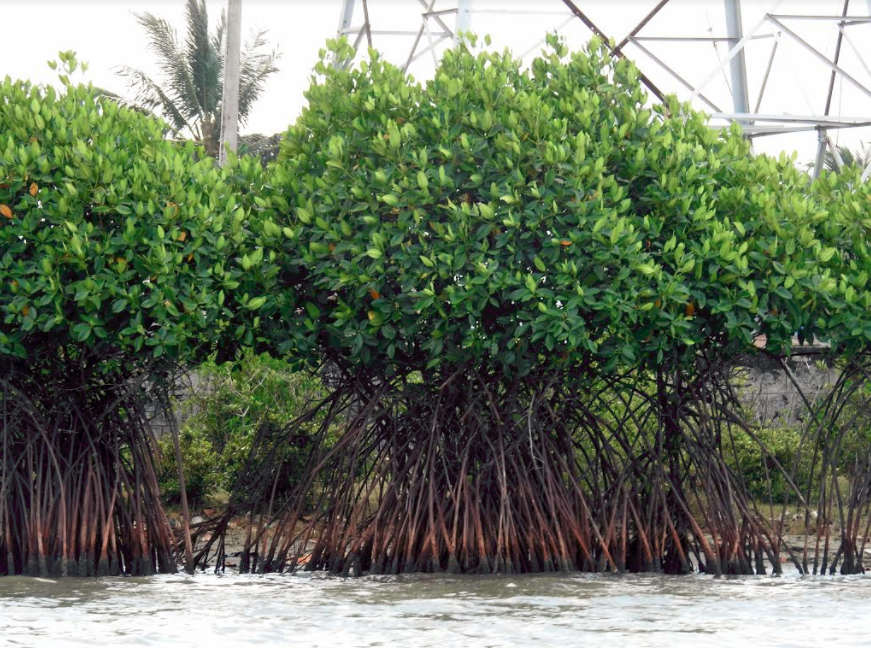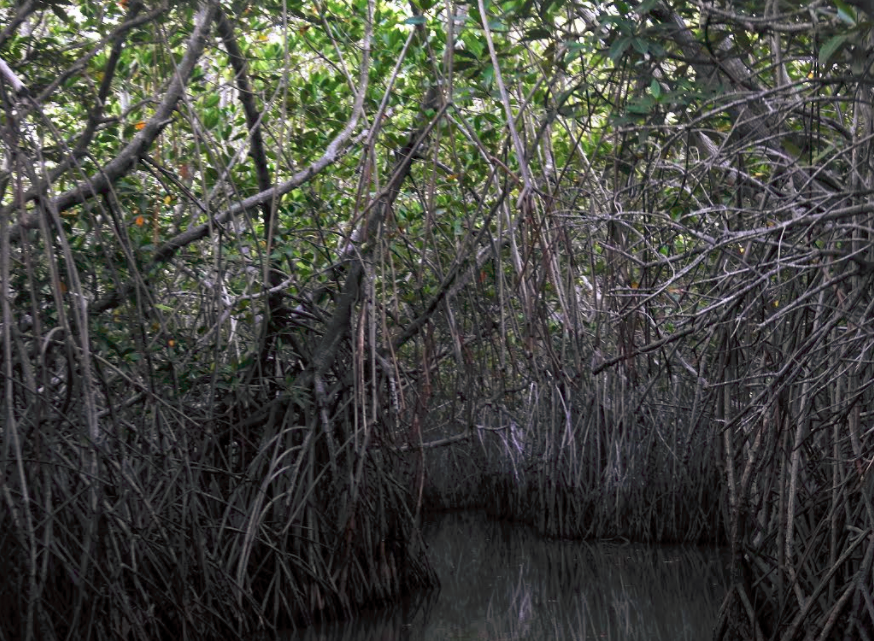
Did you know that the world’s second largest mangrove forest is in Pichavaram Mangrove Forest near Chidambaram? Well, this is a fact that is largely unknown but the beauty of the Pichavaram mangrove forest located between the Vellar estuary in the north and Coleroon estuary in the south is a delight for all nature lovers. This estuarine complex forms the Killai backwater and Pichavaram mangroves and offer over 400 water routes for boating. A picturesque drive past paddy fields, colourful villages with traditional style huts and women selling fish by the roadside leads you to Pichavaram that has several islands interspersed in a vast expanse of water and mangroves spread over 1100 hectares. A sand bar separates these backwaters from the sea.

Nature Unlimited
The mangroves are trees and plants that adapt themselves to grow in saline or salty soil typically found in coastal areas and backwaters. In Pichavaram, as the boat navigates through the amazing network of trees and plants you will be treated to unending emerald green views of these plants spread across the islands. There are around 20 different varieties of trees in the mangrove forest and it is a marvel to see them grow in these rather hostile conditions since the sea tides bring salt water in and out twice a day which causes much variation in the salinity levels. To adapt to this, these trees have unique root systems with membranes that only allow fresh water to enter. They also have breathing roots that grow vertically up from the water and have pores that can take in oxygen. The sight is compelling and when you see the breathing vertical roots rising out of the water you can be assured that this is quite unlike anything else you have seen. Look carefully and you can see a plant that has salt crystals on its leaves and this is how it secretes out all the excess salt it takes in through its roots. In several places the canopy of leaves here is so thick that it allows very less sunlight to filter through. In fact, keeping the ecological sensitivity of the area in mind it is now banned to cut the tree root which was done in the past by local villagers for firewood. Pichavaram is also home to water sports such as rowing, kayaking and canoeing so if you are inclined to some adventure, you are at the right place.

Topography
The Pichavaram mangrove is unique because of the rare species of trees it has including vicennia and Rhizophora and also supports rare varieties of economically important shell and fin fishes. Naturally, students and scientists from across India flock here to study the mangrove forest and its incredible biodiversity. The mangroves are rich in avian life too with pied kingfishers, snipes, cormorants, egrets, storks, herons, spoonbills and pelicans being spotted here. This place has already recorded over 200 species of birds and between November to January you can also see several migratory birds who make this their breeding ground. What attracts the birds in these large numbers is the fact that there is abundant availability of different kinds of habitats like channels, creeks, gullies, mud flats and sand flats here as well apart from the sea shore. Several kinds of seaweed, fish, prawns, crabs, oysters, turtles, and otters are seen here. Look out for crabs that usually scuttle along the roots and the silver hued fish that keep jumping out of the water. And if you are really lucky you also have chances of seeing sea otters and dolphins but these are quite rare. The Pichavaram mangroves are also believed to be among the healthiest mangroves in the world. The water in most places is not more than three feet deep but as the mud here is quite sludgy making it inadvisable to get out of the boat. Also the water levels vary in different parts so make sure that you do not attempt to get outside the boat and be wise to follow instructions and make the most of the natural environs here. The small canals have tunnels of roots and branches and some hang so low that there is hardly any room to pass through and this is what makes this place quite enticing. Well imagine the serenity which is only broken by the swish of the boatman’s paddles, bird song and the dull roar of the sea in the distance. This place is certainly like no other and make sure you leave it as such so that its pristine beauty can remain for others to see and enjoy too.

Did you know?
During the 2004 Tsunami, the Pichavaram mangroves helped in saving many lives by reducing the force of the gushing water.
Fact File
How to Get There: Pichavaram is located around 30 minutes from Chidambaram in Tamil Nadu and you can hop into a taxi or a bus to reach the place. The nearest airport is in Tiruchirapalli, 170 kilometers from Chidambaram.
Stay: It is better to stay at Chidambaram that has several options for accommodation.
Boat Rides: The boat ride starts from 9 am to 6pm and row boats and motor boats are operated by the Tamil Nadu Tourism Development Corporation to ferry passengers through the mangrove forest

Travel Tips:
- A boat ride is best taken in the morning or late afternoon as this place is quite hot and humid.
- Taka a 2 hour trip to explore the mangroves thoroughly.
- You can tip the boatman if he takes you deeper inside the smaller and narrow canals which can be possible if you have a row boat as opposed to a motor boat.
- November to February is the best time especially if you also want to do a spot of bird watching.
- Weekends are very crowded so if possible stick to weekdays.
- Carry drinking water and an umbrella as well as sun tan lotion.
This story appeared in the Jan-Feb 2018 issue of Trujetter here: Discover_Pichvaram